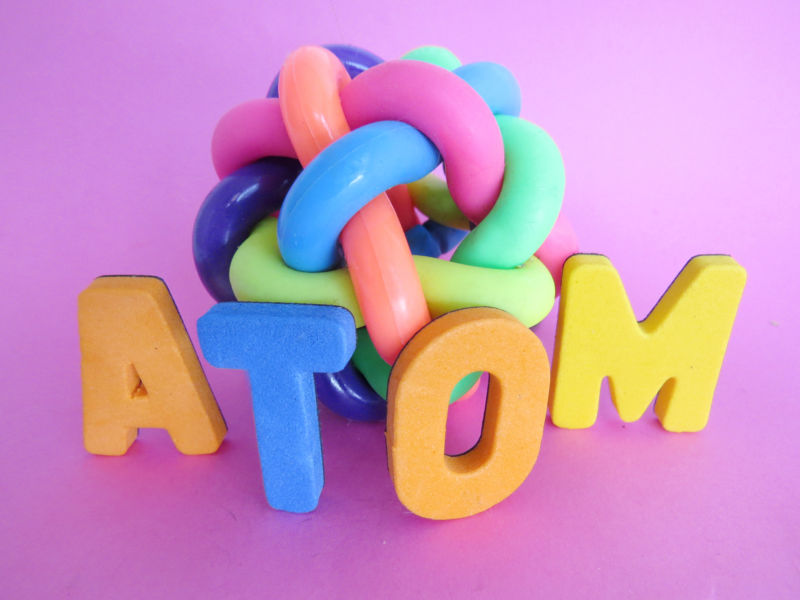
A long time ago, in a place not so far away, I used to believe that future lasers and optics would knock electronics into a tin hat. Yet silicon electronics still dominate all forms of computation and integrated circuit technology. The only place where optics rules is in communication, but even there, the extent of optic’s kingdom is limited.
For optics to really be useful, it needs to be based on the same technology as electronic integrated circuits: complementary metal oxide semiconductors (CMOS). Therein lies the problem—there are no light sources that are CMOS compatible. New research, involving bar-buzzing electrons, may create a future for silicon light sources, but only if some fairly fundamental problems are solved.
Silicon’s dark secret
Light-emitting diodes are as cheap as chips, but they aren’t made from silicon. Why? Because silicon doesn’t like to emit light.
Semiconductors at a general level are all the same. Electrons can exist in the valence band, where they are stuck bound to a local atom, or they can be in the conduction band, where they are free to move around.
For an electron to go from the valence to the conduction band, it needs to acquire energy greater than the energy difference between the valence and conduction bands. When an electron drops from the conduction band to the valence band, it must lose that energy. In a light-emitting diode, electrons drop out of the conduction band by losing energy in the form of light. And, importantly, they can do this in a single step.
In silicon, electrons have to emit a photon and a sound vibration (a phonon) at the same time to reach the valence band. Instead, the electron typically finds a way to lose the energy without emitting a photon, so no light comes out. The result is not that the silicon light-emitting diodes are impossible but that they are impossibility inefficient.
Buzzing the light out of silicon
To overcome this problem, a team of researchers has decided to scare the light out of silicon. Imagine a middle-aged electron, comfortably residing in a middle class bit of silicon. Suddenly, out of nowhere, a boy-racer electron roars along the silicon surface, scaring all extraneous weight out of the silicon-bound electron. What is the result? Our perturbed electron emits its outrage in a storm of light and fury.
In slightly more detail: the researchers pattern silicon so that there are a series of raised bars along the surface. Then, the researchers fire electrons along the surface so that they cross the bars. As the speeding electron approaches a bar, the other electrons in the silicon get driven away from the surface. As the speeding electron moves on, the electrons relax back to the surface in a series of oscillations that result in light emission.
Why bars? Why not a flat surface? Well, each bar produces light independently. Where we view the light (at a distance), we see only the product of the mixture, or interference, between all the bars. By separating emission locations and choosing the energy of the speeding electrons, we select for certain colors of light to dominate the emission spectrum.
In the end, the result is a structure that can be tuned to emit light over a fairly broad range of wavelengths. Even better, with improved control of the electron beam and feedback, it might be possible to make a kind of free electron laser, except the electrons aren't entirely free—they're in silicon. But at the moment, all the researchers have is a feebly glowing bit of silicon, because (as with all firsts) the efficiency is really poor.
The clarity and cleanliness of silicon
This way of producing light is an old trick. It is well known that shooting an electron beam along a structured metal surface will result in light, so what makes this special? The researchers intuited two advantages that silicon would have over metal.
First, metals are a bit messy. Yes, they have lots of electrons that are free and, therefore, easy to drive around. But those electrons also collide with each other and the surrounding nuclei, so they lose their energy in many different ways. In the end, only a tiny fraction of the energy imparted to the electrons is emitted as light. But in silicon, the electrons are all bound to a local nucleus. The crystalline silicon presents fewer opportunities to lose energy, so radiation is emitted a bit more readily.
The other plus is that metals are not transparent, while silicon is. This reduces the chance that light is reabsorbed before it leaves the surface.
These advantages give the researchers hope that higher efficiencies (on the order of 10%) can be obtained. However, caution is warranted. Remember the electron shooting along the surface? That has to travel in a vacuum. Where do the fast electrons come from? A scanning electron microscope. The researchers expect that the whole kit, including the electron gun, can be encapsulated on a chip. But the vacuum requirement isn't going away, and I’m not sure that that will ever be CMOS compatible.
Nature Communications, 2019, DOI: 10.1038/s41467-019-11070-7 (About DOIs)
reader comments
26